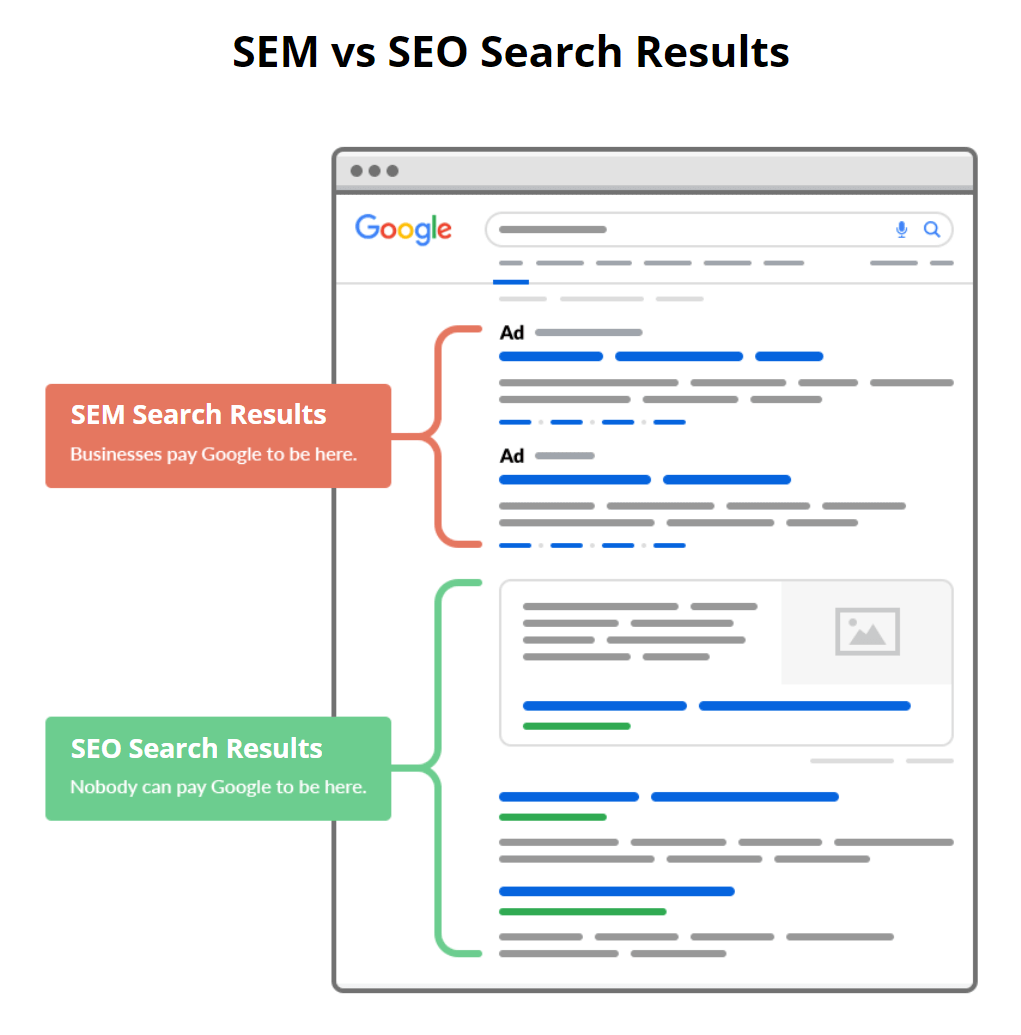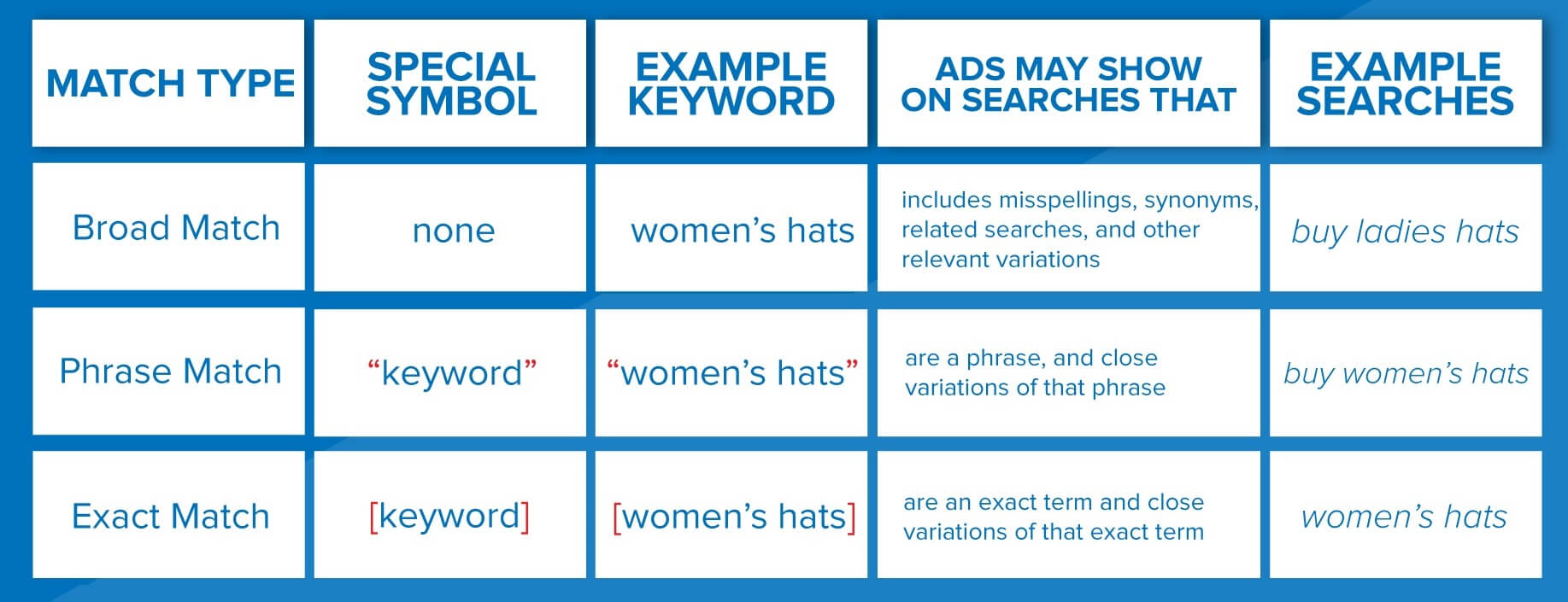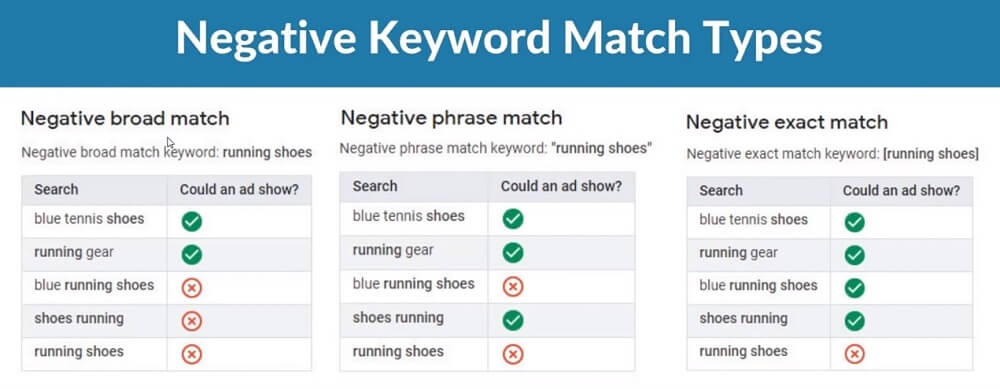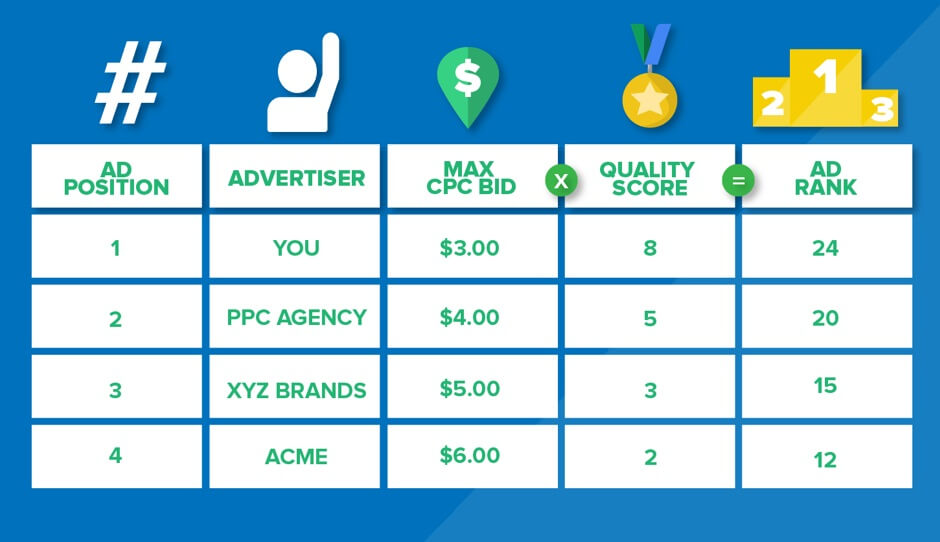Also known as search engine marketing, SEM is arguably one of the most efficient digital marketing strategies that businesses can leverage to drive online traffic and conversions. While organic marketing efforts are definitely useful in the long run, SEM plays a pivotal role in bringing traffic to your website or landing pages as well.
What SEM basically means is the act of purchasing ads, for them to appear at the top of the search engine results page (SERP). The paid search advertising method ensures that your brand name is visible when users search for select keywords relevant to your products or services.
What’s the difference between SEO and SEM?

Search marketing is a general term that the digital marketing industry uses to classify techniques employed to raise a brand’s search visibility, or to get a brand to appear in higher frequencies on SERPs. Generally, this can entail both a paid SEM strategy, as well as an unpaid search engine optimization (SEO) marketing strategy.
SEO is focused on optimizing web pages to rank higher on the SERP organically. Whereas, SEM is a pay-per-click strategy that involves bidding for target keywords to get visibility and traffic from your ad at the top or bottom of the SERP.
Pay-Per-Click Marketing

Another term that has commonly surfaced when discussing SEM is ‘pay-per-click marketing’, which stands for PPC marketing in short.
PPC marketing is a paid method utilized when marketers create digital ads and are charged every time a user clicks on their ad. While PPC marketing can be part of SEM efforts when they are shown in search results, they can also be utilized through other manifestations, such as social or display ad marketing.
For instance, this occurs if you are employing PPC marketing on platforms that promote social ads such as Facebook or Twitter, or display ads on Google.
SEM Platforms
This refers to a search engine where marketers can promote their search ads on, and which users can see when they perform a keyword search. The most common platform for SEM is Google, with Bing following closely behind.
Google Ads is widely used around the world, since many people search for answers on Google every second. It allows you to reach wide audiences that have high-quality user intent related to your products or services.
Bing ads serves ads on partner sites, including Yahoo and MSN. This allows you to connect with users who are not using Google for search.
Whichever platform you choose to advertise on, remember that they are not always mutually exclusive. In fact, advertising on different platforms is a good idea to expand your brand’s reach to various audiences.
Types of keywords in search engine marketing

Doing keyword research is pivotal before running any SEM campaign. Here, we’re talking about the keywords that your target audiences are typing into the search engine. Ideally, you would want to target and/ or avoid specific keywords.
Broad match keywords
These target the variations of a phrase, such as its singular or plural forms, misspellings, or synonyms.
Phrase match keywords
These target the exact phrase and any other words that come before or after the phrase.
Exact match keywords
These are more specific, and closely related to the targeted term. They include incorrect spellings, synonyms or closely associated terms with similar search intent.
Negative keywords

This refers to the terms that you don’t want to target. They can range from variations of your broad, phrase and exact match keywords that you do not want appearing in the campaign. Generally, these are unrelated to the search intent of your specific term.
Types of targeting in search engine marketing
Now let’s move on to the various types of targeting methods utilized in SEM campaigns. Targeting ads is key in a successful advertising campaign. With targeting, you are able to create additional parameters for your ads, allowing them to be more specific and effective. Setting precise targeting options also helps you optimize your ad spend effectively.
Location targeting

This method sets your campaign to appear to audiences who are within a certain geographical zone.
Ad schedule targeting

This sets your ads to appear only during certain times of the day or days of the week.
Demographic targeting

This targeting method lets you show your ad based on people’s gender, age group, parental status or household income bracket.
Device targeting

Needless to say, this reaches users who are on specific devices, such as desktops or mobile phones.
The structure of SEM

We’re talking about the account structure of your SEM campaigns, which refers to the way these campaigns are planned and ran.
At the campaign level, each campaign should have its own goal, budget, bid strategy and various targeting settings.
At the next level, we have our ad groups. These break down the entire SEM campaign into smaller themes. It is normal for every campaign to have a few ad groups.
Lastly, on the third level, we have our ads and keywords. In each ad group is a distinct set of specific keywords and ad copies. They might target a different audience and theme even though they belong to the same ad group.
The ad auction in search engine marketing

As you prepare and run your SEM campaign, be aware that your ad might not appear every single time a user searches for a keyword that you have targeted.
The search engine platforms have their own unique algorithm that adjusts when your ad will be shown to the user, and how they rank your ad with other competitors fighting for the same keyword. The way this is structured is similar to an auction, hence the term, ‘ad auction’. How you win the auction is based on a few factors.
Firstly, the maximum CPC (cost-per-click) bid. This refers to the highest amount that you are willing to pay for a click on your ad.
Next, the quality score. This is a rating that the search engines give your ads, and they are based on factors including your click-through rate, keyword relevance, historical performance etc.
Last but not least, there is the ad rank. This is a rating that the search engines give your ads, and they help to sort out where your ad will be appearing on the SERPs. The better your ad rank, the better your ad placement will enjoy in the SEM campaign.
Conclusion
Looking to start a SEM campaign anytime soon? Now that you know the basics, start to do further research and plan your marketing campaign well for the best results.
All in all, running a SEM campaign together with an organic SEO strategy is certainly effective in driving online traffic, leads and revenue for your business.
Ready to Elevate your Business to the Next Level?
Discover how we can help accelerate your business growth through our FREE digital strategy session. Let’s Work Together


